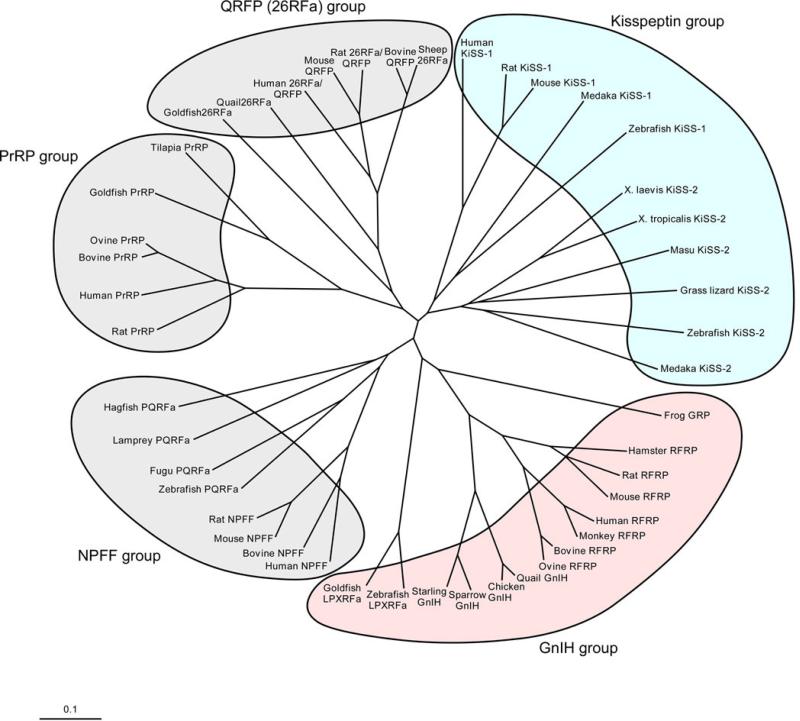Figure 1.
Phylogenetic tree of the RFamide peptide family. Extensive studies over the past decade have demonstrated that vertebrate brains produce a variety of RFamide peptides. To date, five groups of the RFamide peptide family have been documented as follows: (1) NPFF group, (2) PRL-releasing peptide (PrRP) group, (3) GnIH group, (4) kisspeptin group, (5) pyroglutamylated RFamide peptide (QRFP)/26RFamide group. GnIH was discovered in the quail hypothalamus. GnIH inhibits gonadotropin synthesis and release in birds. GnIH orthologs sharing a common C-terminal LPXRFamide (X = L or Q) motif have been identified in other vertebrates from fish to humans. As in birds, mammalian and fish GnIH orthologs inhibit gonadotropin secretion. By contrast, the newly identified neuropeptide kisspeptin, encoded by the KiSS-1 gene, acts to stimulate the reproductive axis. Mammalian kisspeptin possesses a C-terminal RFamide or RYamide motif. The KiSS-1 gene has been identified in mammals, amphibians and fish. A second isoform of KiSS-1, designated KiSS-2, has also been identified in various vertebrates, but not birds, rodents and primate. Reviewed in [103,109].

